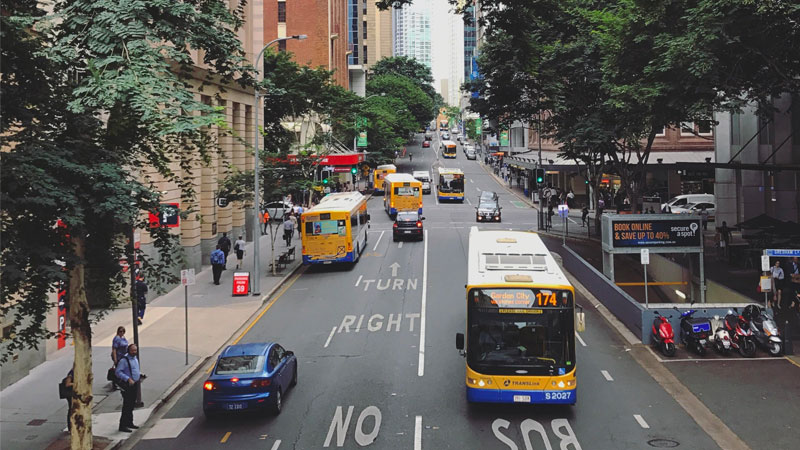Brisbane Metro to Reshape Adelaide Street
Brisbane City Council has released its plan to transform one of the cities vital public transport corridors into a new transit boulevard, including an underground tunnel entry for Brisbane Metro.
Adelaide Street in Brisbane’s CBD will now be transformed in order to declutter the existing infrastructure and provide a revised vision for a walkable, tree-lined boulevard, weaving together retail and key civic spaces with world-class public transport access.
The recently released Draft Adelaide Street Vision has outlined council’s plan to adapt the century-old transit corridor to meet changing community needs.
Visitation to Brisbane is marked to increase by around 30 per cent by 2020, and infrastructure to support and service the high-frequency Metro vehicles will be an initial focus.
The $944 million Brisbane Metro is a key driver for the new direction, with the project delivering a new tunnel under Adelaide Street to link North Quay to the King George Square Bus Station.
Pedestrian movement will also be prioritised with widened footpaths, build-outs and improved street crossings.
Clark Lane will also be activated with the addition of an adjoining pocket park with an outdoor gallery and creative lighting as well as enhancements to Hutton Lane to improve connectivity to Central Station.

Lord mayor Adrian Schrinner said the Draft Adelaide Street Vision outlined Council’s plan to adapt Adelaide Street to increase safety and transport accessibility.
“As our city experiences increased pedestrian and public transport activity, we want to transform this corridor into a world-class transit boulevard,” lord mayor Adrian Schrinner said.
“We're going to make sure that is a world-class arrival experience in Adelaide Street and a much more pleasant environment, a safer environment, for pedestrians as well.”
Adelaide Street, one of four key city boulevards that is both pedestrian and transit-oriented within Brisbane's CBD, was originally sounded out for its development potential in the City Centre Master Plan 2014.
“We need to plan a desirable entry point into the heart of the city ahead of the high-frequency Brisbane Metro, which is expected to increase passenger numbers to King George Square by 120 per cent,” Schrinner said.
Council is currently evaluating expressions of interest from five consortia to build the inner city infrastructure for the Metro before releasing a short-list to commence the tender proposal phase later this year.
The Brisbane Metro will stretch 21 kilometres, from Eight Mile Plains to Roma Street Station, and from the Royal Brisbane and Women’s Hospital to UQ Lakes busway station.
Out of the project’s budget, $196 million has been set aside for the depot, fleet and systems, $557 million for infrastructure and project management and delivery costs $189 million.
The Brisbane Metro’s station at South Brisbane’s Cultural Centre will cost $315 million, about a third of the metro’s budget.
The route will also close Victoria Bridge to vehicles, reconfiguring the number of metro and bus lanes from four to three, and includes the dedicated off-road cyclist and pedestrian path.
Brisbane residents can provide feedback on the draft Adelaide Street vision until 24 June, after which the council will begin working on the vision coinciding with Brisbane Metro's construction timeline.















